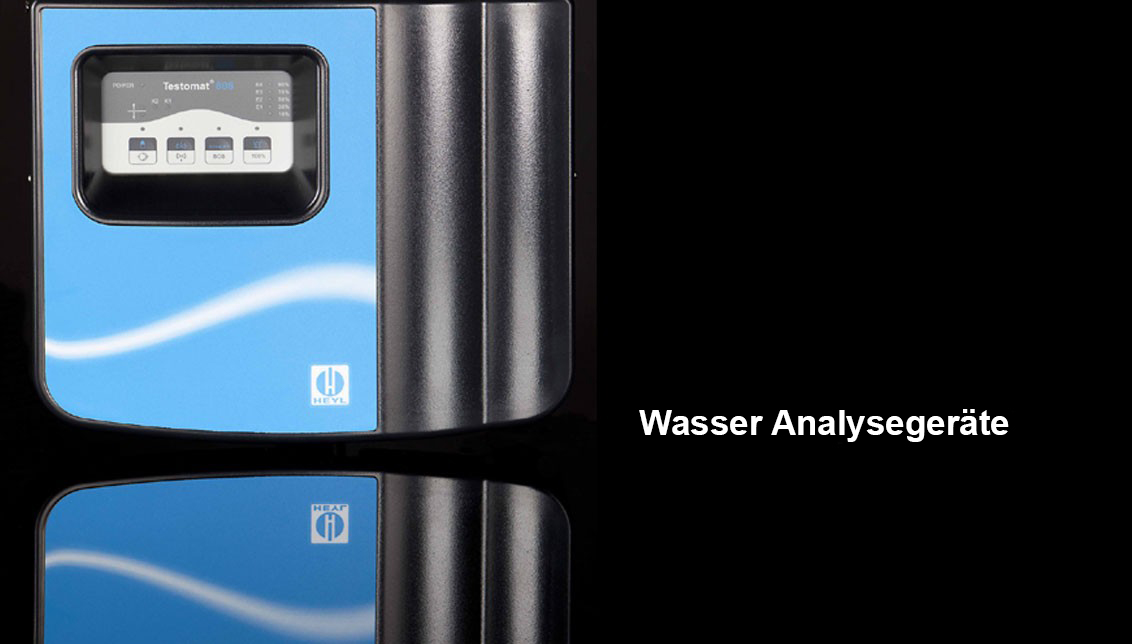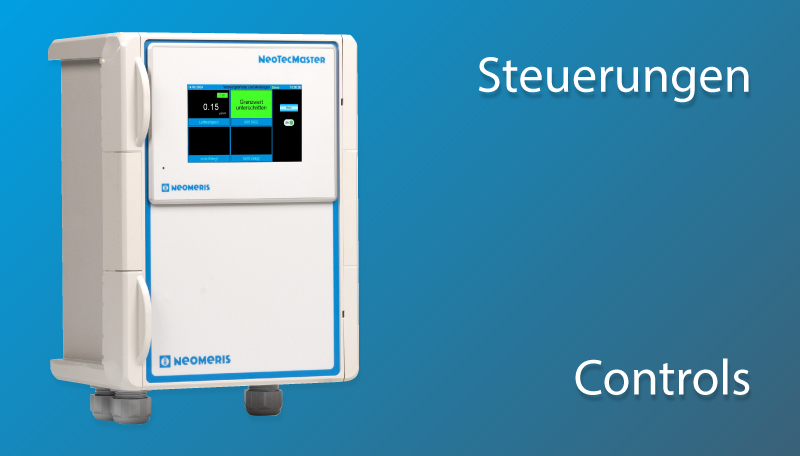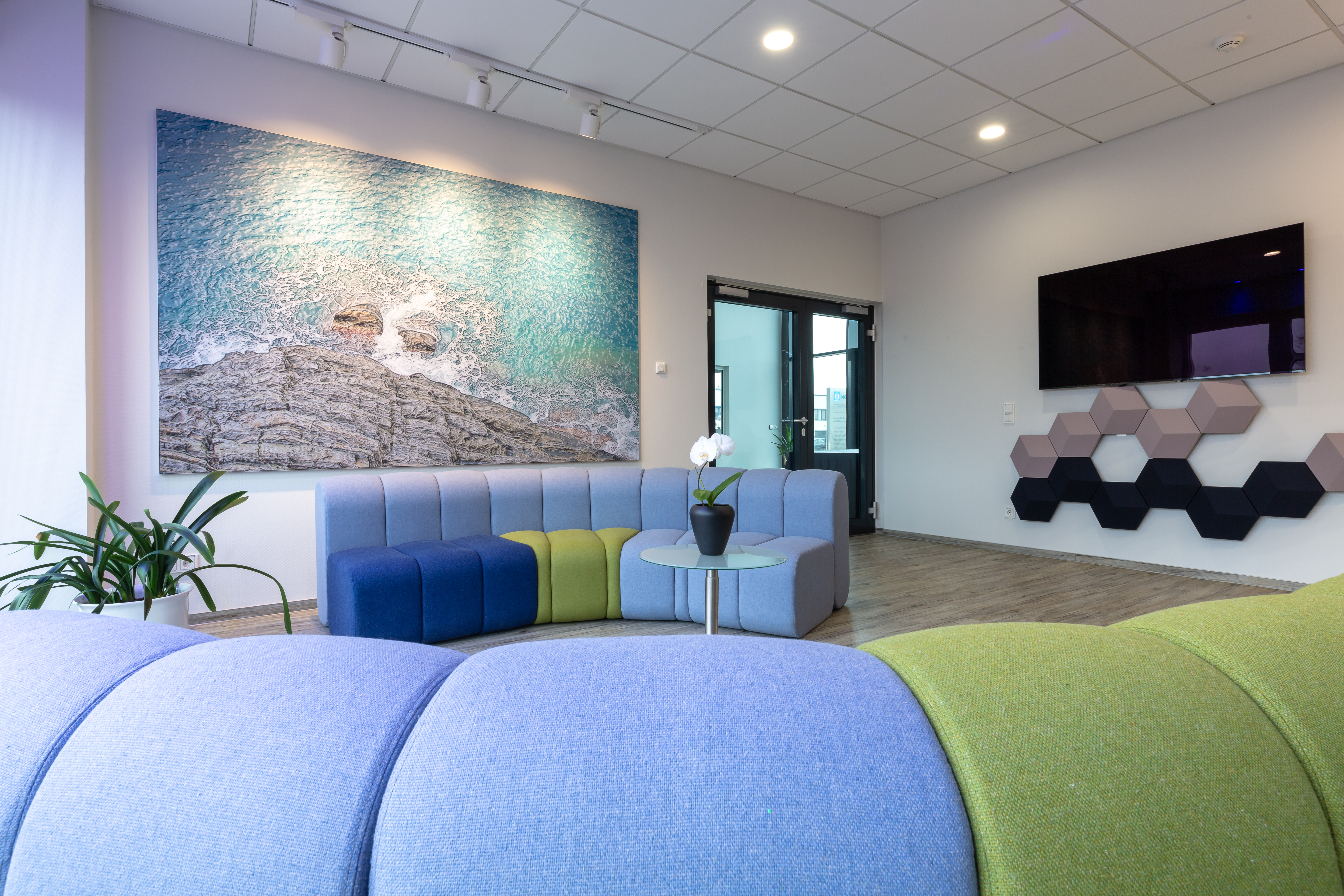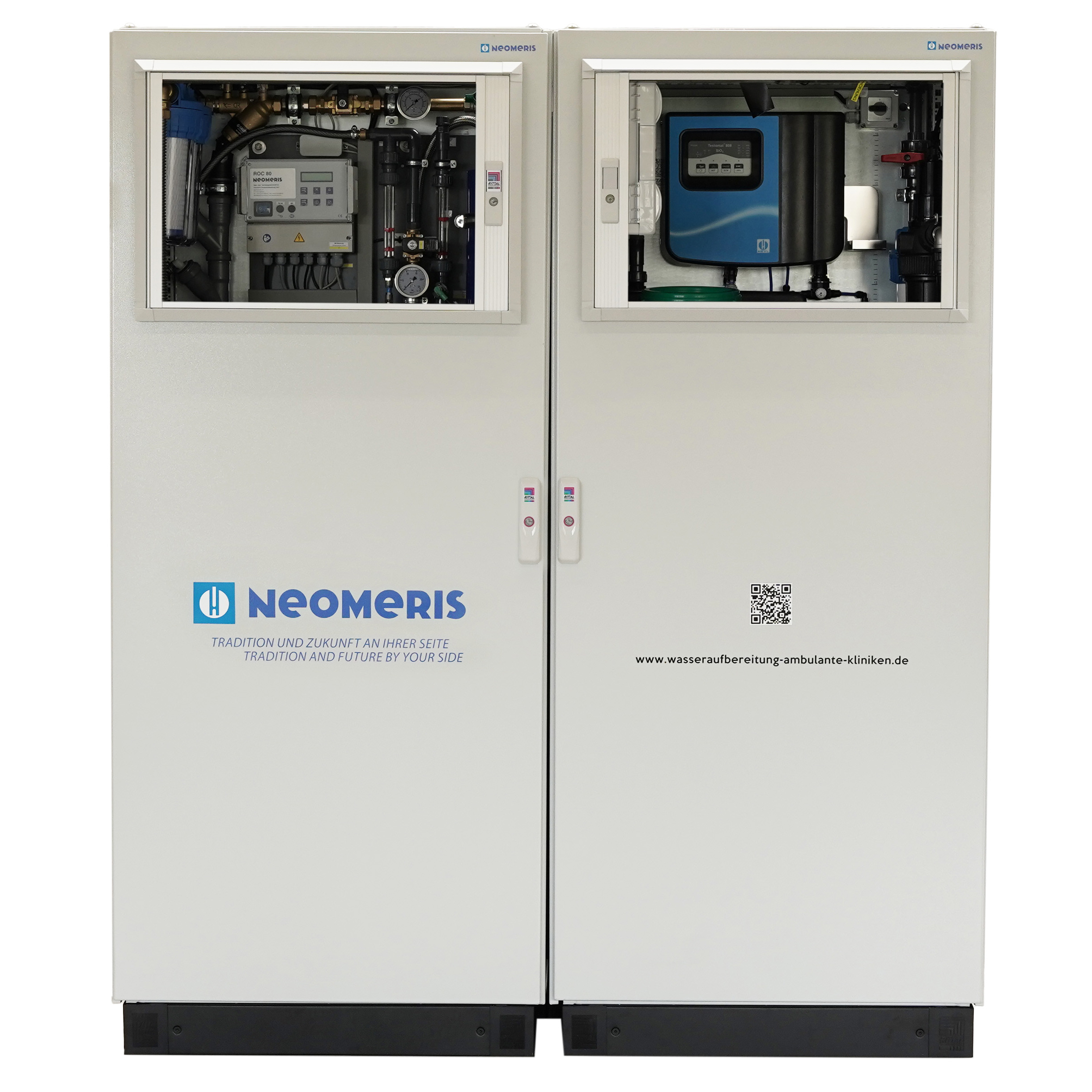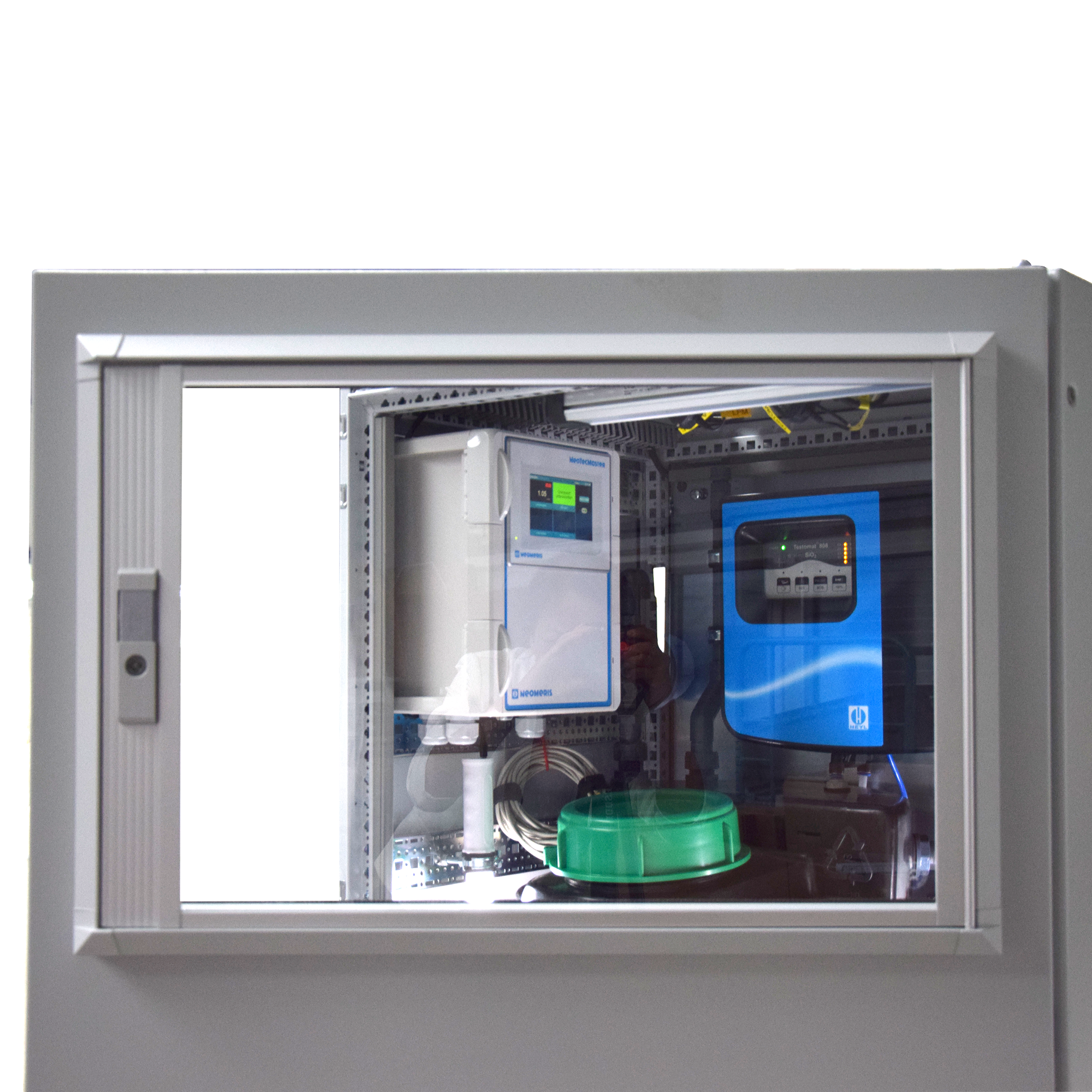€32,802.85*
Please log in to receive your conditions.
Available in 49 days, delivery time 1-2 days
(Login for quotation) The entered number of pieces will be taken into account when creating the offer.
Product information "NeoDeWa water treatment plant for outpatient clinics, incl. lifting system, UV system, pyrogen filter, Aqua-Stop, collection trays, viewing window and NeoTecMaster"
The modular water treatment system was specially developed for the outpatient care sector. While retaining the overall geometry, the system can be adapted to the different degrees of water hardness in Germany, the quantities required in different outpatient centers, as well as to the initial water quality including any treatment steps on the part of the supplier. The modularity offers the decisive advantage that the overall concept can be adapted to the respective water type or composition as well as the treatment process of the supplier.
Concept
Demineralized water treatment for the outpatient sector Use of demineralized water in the outpatient sector
Fully demineralized water (demineralized water) plays a central role in the outpatient medical sector, particularly in the reprocessing of medical devices, in laboratory applications and in the final rinse for mechanical instrument reprocessing. The aim is to avoid residues that could be caused by minerals, salts or other substances contained in tap water.
For safe use, demineralized water must meet defined quality requirements:
- The conductivity must be below 0.1 µS/cm. This indicates that it contains almost no dissolved salts or ions.
- The silicate content must not exceed 0.4 g/l to avoid silicate deposits on medical instruments that could impair functionality or lead to hygienic risks.
Only if these limit values are adhered to can residue-free and gentle reprocessing be guaranteed that meets the hygiene requirements in the outpatient sector. This is particularly relevant in dental practices, dermatology, endoscopy and in outpatient operating theatres, where deionized water is used for final rinsing or for steam generators in sterilization processes, among other things.
The components used are listed below:
- Cabinet
- System separator
- Filter system (pre-filter & activated carbon filter)
- Softening system
- Reverse osmosis system
- Permeate tank 100 liters (volume can be adjusted)
- Pressure boosting station
- Two-stage mixed bed
- UV system (optional)
- Pyrogen filter (optional)
- Ring line in front of the mixing bed if the consumers are not removed to prevent contamination
- Brine lifting system (optional)
- Testomat 808 SIO2 (silicate measurement)
- Conductivity measurement
- NeoTecMaster (optional)
Performance of the system
Depending on the design of the system, 90 l, 150 l, 230 l or 300 l deionized water can be produced per hour.
The capacity of the permeate tank can be adjusted, but must be positioned outside the cabinet due to the larger dimensions including the pressure booster station from a capacity of > 150 l/ (depending on the application).
Shut-off via system separator
The installation of a system separator is mandatory to protect the drinking water network from contamination by treated water or changes to the natural composition of the drinking water fed in due to its technical treatment. The system has an integrated system separator (type BA), which is located directly behind the Aqua-Stop of the water connection.
Aqua-Stop (solenoid valve shut-off)
An Aqua-Stop is a safety mechanism used in water supply systems to stop or limit the flow of water if a fault or leakage occurs.
The Aqua-Stop is located directly behind the main water connection of the system as the first element. The associated solenoid valve is coupled with two sensors, one of which is integrated in the bottom tray of the cabinet and the second is located outside at the level of the tank and the pressure booster station.
Filter
The pre-filter section is a filter unit consisting of a pre-filter and an activated carbon filter. Its main purpose is to protect downstream softening and osmosis systems that could be damaged by impurities in the water.
Water softener
The water softener removes the hardness constituents (calcium and magnesium) from the drinking water and replaces them with sodium. The function is based on an ion exchange process and ensures that the reverse osmosis membranes are reliably protected against clogging.
Reverse osmosis
In reverse osmosis, the natural osmotic process is reversed. The softened water is pumped through a membrane under pressure, whereby the membrane only allows water molecules and very small molecules to pass through and retains larger particles such as salts, bacteria, fours and other impurities. The installed reverse osmosis has a retention rate of approx. 98% in relation to all substances dissolved in the water.
Permeate tank
The built-in round tank offers advantages in terms of stability, cleaning and space requirements. The uniform shape ensures that the water is treated and stored efficiently.
The optimized tank geometry prevents the potential growth of microbiological contamination and thus meets the high requirements for media purity to a greater extent.
Pressure booster station
The pressure booster station ensures that the connected consumers are supplied with the required operating pressure and flow rate. This enables an optimized and needs-based media supply.
Mixing bed
The two-stage mixing bed (connected in series) is a so-called pole mixer. Due to the special composition of the resin contained in the cartridges, all dissolved substances remaining in the water are reliably removed. The resin used is highly effective against silicates, which have a particularly negative impact on the reprocessing of medical products. The mixing bed is also the first stage of the recirculation process when using the optionally available buffer tank system.
Pyrogen filter
A pyrogen filter is a special type of filter used in water treatment to remove pyrogens from the water. Pyrogens are substances that can cause an immunological reaction in the body, in particular an increase in body temperature. These are usually endotoxins that are released by bacteria such as Escherichia coli (E. coli).
Water disinfection by UV irradiation
The development of water disinfection using UV radiation has made considerable progress in recent years due to its simplicity and efficiency. The UV-C rays generated, which are significantly more intense than sunlight, are therefore used to disinfect water in order to counteract water contamination. They enable the removal of legionella, microbes, bacteria, viruses and protozoa while respecting the environment.
Testomat® 808 SiO2 silicate measuring device
A Testomat®808 SiO2 silicate is used for permanent silicate monitoring. The Testomat®808 SiO2 is a measuring instrument that is used to determine the silicate content in water. The use of the Testomat 808®SiO2 ensures reliable compliance with the limit value for SiO2 of 0.4 mg/l recommended by the DGSV and AKI.
Conductivity measurement
Continuous monitoring of conductivity in the range of 0-10 μS/cm on the second mixing bed.
For the reprocessing of medical devices, a conductivity of <1 µS/cm is recommended for the water used for the cleaning & disinfection and sterilization process. The conductivity measurement used continuously monitors whether the conductivity falls below this value.
NeoTecMaster® 5 inch with housing
Data acquisition, visualization and processing are just some of the relevant topics in the field of modern water treatment. The networking of different measuring systems and their integration into process automation is an elementary component here. The NeoTecMaster® was specially developed for this task and is a manufacturer-independent multi-parameter system.
Cabinet systems
Only a minimum footprint of 1.60 m x 1 m is required for installation. The module consists of 2 cabinets, each 80 cm wide and 60 cm deep. It is possible to work with double hinged doors, resulting in a room depth of 1m due to the depth of 60cm and a double hinged door with a dimension of 40cm.
The cabinets used are made of sturdy sheet steel modules and have a high-quality surface coating.
Viewing window
Viewing windows are installed in Rittal enclosures to provide an overview of the measurement technology. The use of viewing windows in Rittal enclosure systems has several advantages. They enable a visual inspection of the devices in the enclosure without having to open the enclosure. This facilitates the monitoring, maintenance and troubleshooting of components without compromising the integrity of the enclosure. The viewing windows are usually made of a transparent material such as glass.
Notes: Viewing windows in Rittal enclosures are only available for single-leaf doors. If this option is selected, please note that the required minimum room depth increases from 100 cm to 140 cm.Abwasser Abführung über Solehebeanlage (optional)
As an optional component, the treatment plant can be extended to include an integrated wastewater lifting unit, which pumps the generated and collected wastewater into the sewer system. The main wastewater volume flows here are the wastewater from the regeneration of the softening system and the concentrate from the reverse osmosis.
Collecting tray
The integrated drip tray is used to detect leaks and is therefore a safety device
- Viewing window
- Lighting
Dimensions
| Height | 180 cm |
|---|---|
| Length | 160 cm |
| Width | 80 cm |
Weight
| Weight | 300 kg |
|---|

